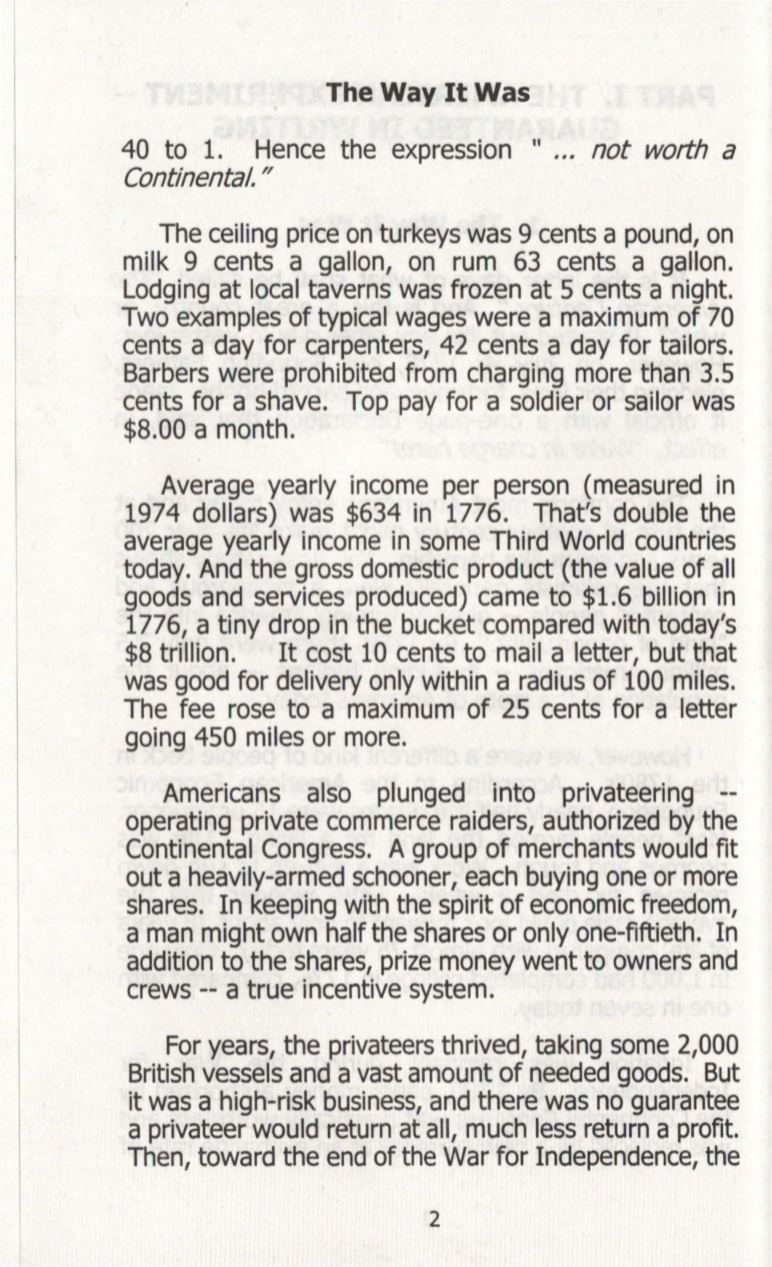

The
Way
It
Was
40 to 1. Hence the expression " ...
not worth a
Continental.
"
The ceiling price on turkeys was 9 cents a pound, on
milk 9 cents a gallon, on rum 63 cents a gallon.
Lodging at local taverns was frozen at 5 cents a night.
Two examples of typical wages were a maximum of 70
cents a day for carpenters, 42 cents a day for tailors.
Barbers were prohibited from charging more than 3.5
cents for a shave. Top pay for a soldier or sailor was
$8.00 a month.
Average yearly income per person (measured in
1974 dollars) was $634 in 1776. That's double the
average yearly income in some Third World countries
today. And the gross domestic product (the value of all
goods and services produced) came to $1.6 billion in
1776, a tiny drop in the bucket compared with today's
$8 trillion.
It
cost 10 cents to mail a letter, but that
was good for delivery only within a radius of 100 miles.
The fee rose to a maximum of 25 cents for a letter
going 450 miles or more.
Americans also plunged into privateering -–
operating private commerce raiders, authorized by the
Continental Congress. A group of merchants would fit
out a heavily-armed schooner, each buying one or more
shares. In keeping with the spirit of economic freedom,
a man might own half the shares or only one-fiftieth. In
addition to the shares, prize money went to owners and
crews -- a true incentive system.
For years, the privateers thrived, taking some 2,000
British vessels and a vast amount of needed goods. But
it was a high-risk business, and there was no guarantee
a privateer would return at all, much less return a profit.
Then, toward the end of the War for Independence, the
2
















